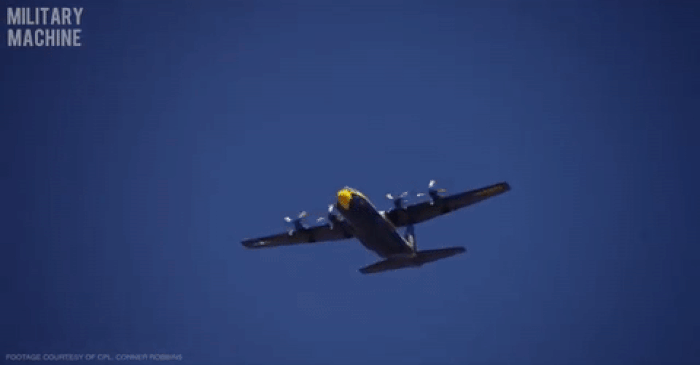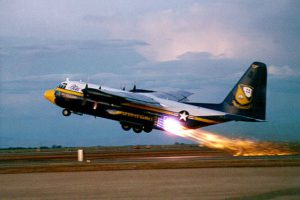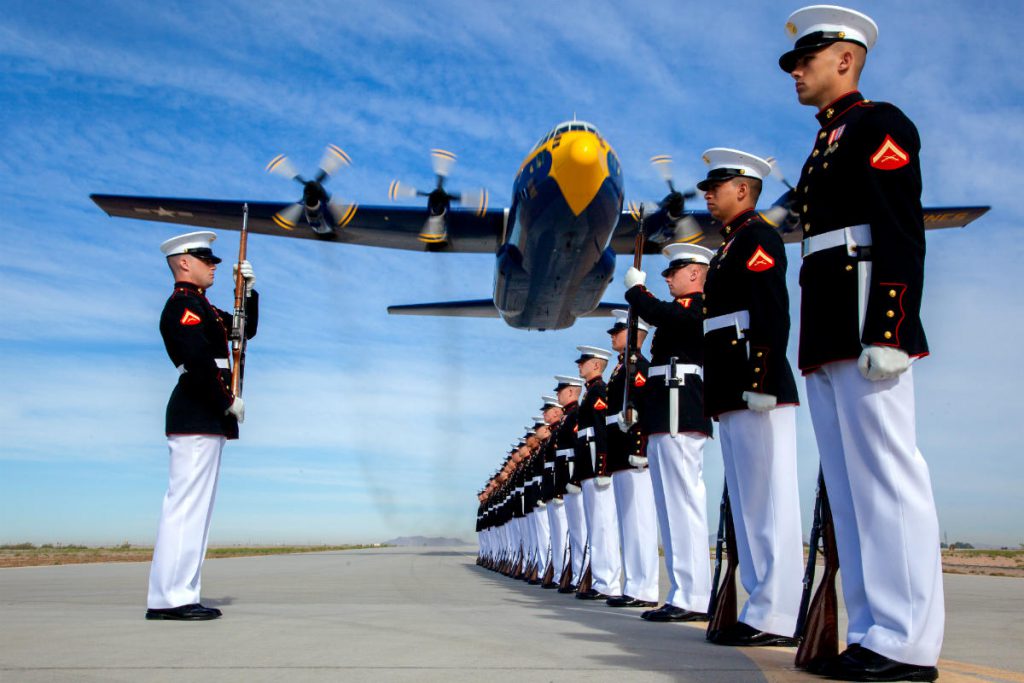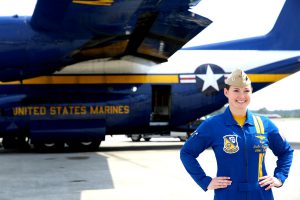Fat Albert – The Blue Angels’ C-130 Hercules
If you are at all familiar with the Blue Angels Team, chances are you’ve heard of their resident workhorse aircraft, “Fat Albert”. The C-130 Hercules has been the team’s maintenance and support aircraft for over fifty years, as well as a beloved performance member during their 35 performances a year. It doesn’t always get the level of attention and respect as the Blue Angel fighters, but rest assured that without the Fat Albert aircraft, the show would not go on.

Blue Angels Conversion:
The Fat Albert aircarft started its iconic role in 1970. The C-130 Hercules was an ideal choice for the demanding logistical duties the Blue Angels would need out of their support aircraft, and it was indeed a match made in heaven. Thanks to its versatile airframe, the C-130 Hercules is the longest continuously produced military aircraft in history with the latest version, the C-130J Super Hercules, still produced today.

Performance:
The Fat Albert aircraft, a T model, sports four Allison T56 engines and maxes out at 320 knots with a range of 2,400 miles and a whopping 45,000 payload. This beast of an aircraft was obviously designed to do heavy hauling, but it is not without maneuverability and speed when matched with a capable pilot. With a wingspan of around 132 feet and just shy of 100 feet long, it’s a huge machine, but if you’ve ever seen the Fat Albert aircraft demonstrate jet assisted take off (JATO), he’s off the ground using just 1,500 feet of runway. Sadly for rocket lovers everywhere, the Blue Angels discontinued the JATO demonstration in 2009 as the supply of these Vietnam-era rockets dried up. You can still find plenty of videos online, however, if you did’t get a chance to see it in person.
Crew:
The all Marine crew consists of three pilots and five enlisted aircrew. During the eight months of performances each year, the main role of the Hercules is to transport equipment and personnel to each of the shows, covering around 100,000 miles during this time. During the winter months, the Blue Angels’ training season, the Fat Albert aircraft does logistical runs between El Centro and NAS Pensacola, Fl. El Centro, located in California just 11 miles north of the Mexico border, is the winter training home to the Angels as well as the site of the first Blue Angels Airshow each year.

Incentive Duty:
In 2014, the Blue Angels hired their first female pilot, Capt. Katie Higgins, who joined Fat Albert’s crew. With extensive combat flight experience in both Afghanistan and Africa, she is proving herself as a pilot looking to take the C-130 to its limits. Rides on the maintenance plane even serve as incentive offers for members of the Navy, and Capt. Higgins along with her two co-pilots make sure they’ll leave with an unforgettable experience. Her entrance into this traditionally male dominated position is a true marker of progression. Furthermore, it serves as an inspirational example of what hard work and determination can bring to those willing to put forth the effort.

Retrofit:
In August of 2016, it was unofficially announced that the current Fat Albert aircraft is heading into depot-maintenance, and will not be flying for the remainder of the year. Speculation arose when the aircraft was missing from the Seattle Seafair airshow in the summer of 2016. Capt. Higgins seemed to confirm the information in a tweet reading, “@fatalbertusmc is going into depot. Since it is my last year on the team, it is the last time I will fly 164763.”
Now see more exciting Blue Angels images.

